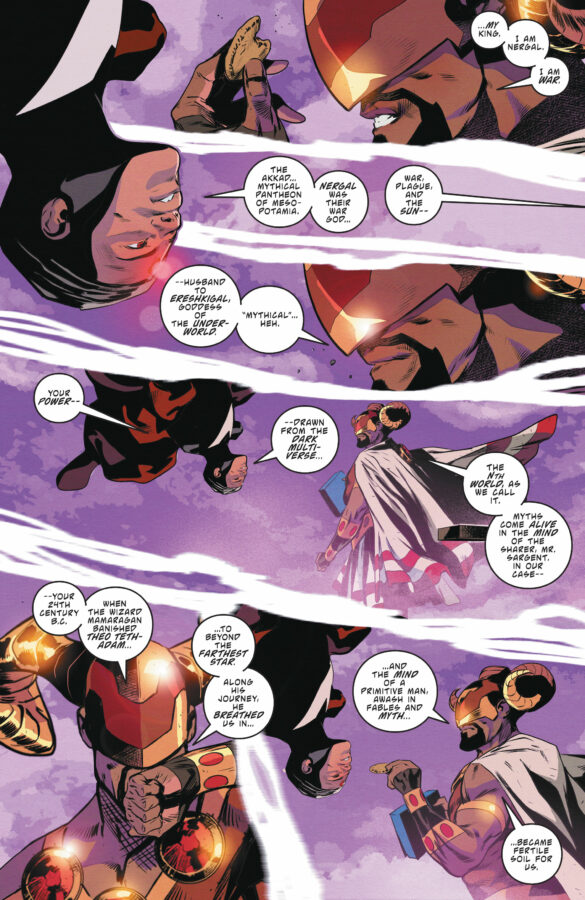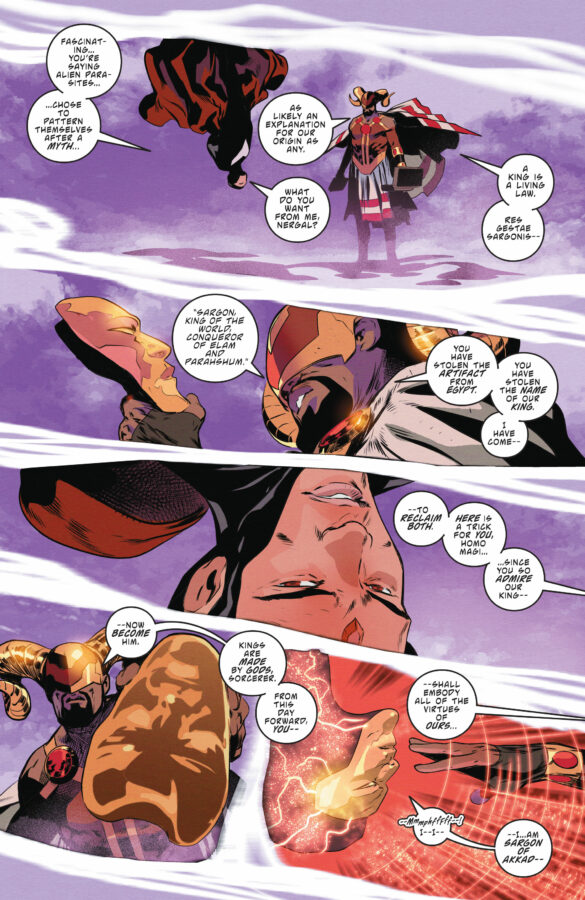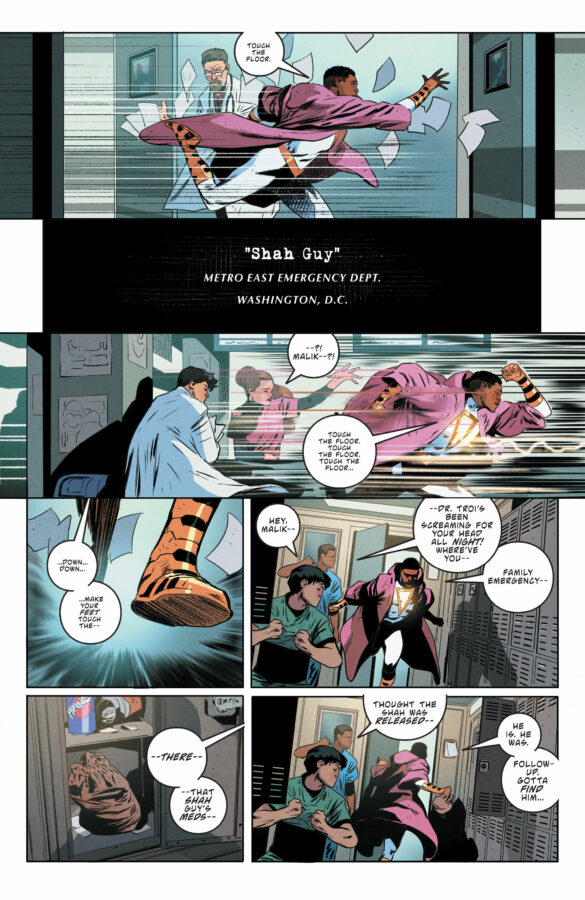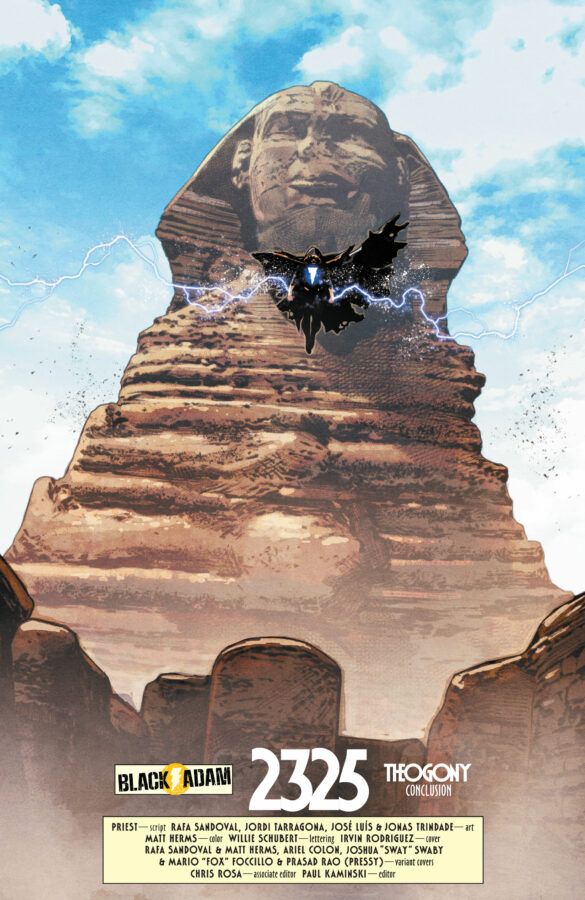Review: Black Adam #5
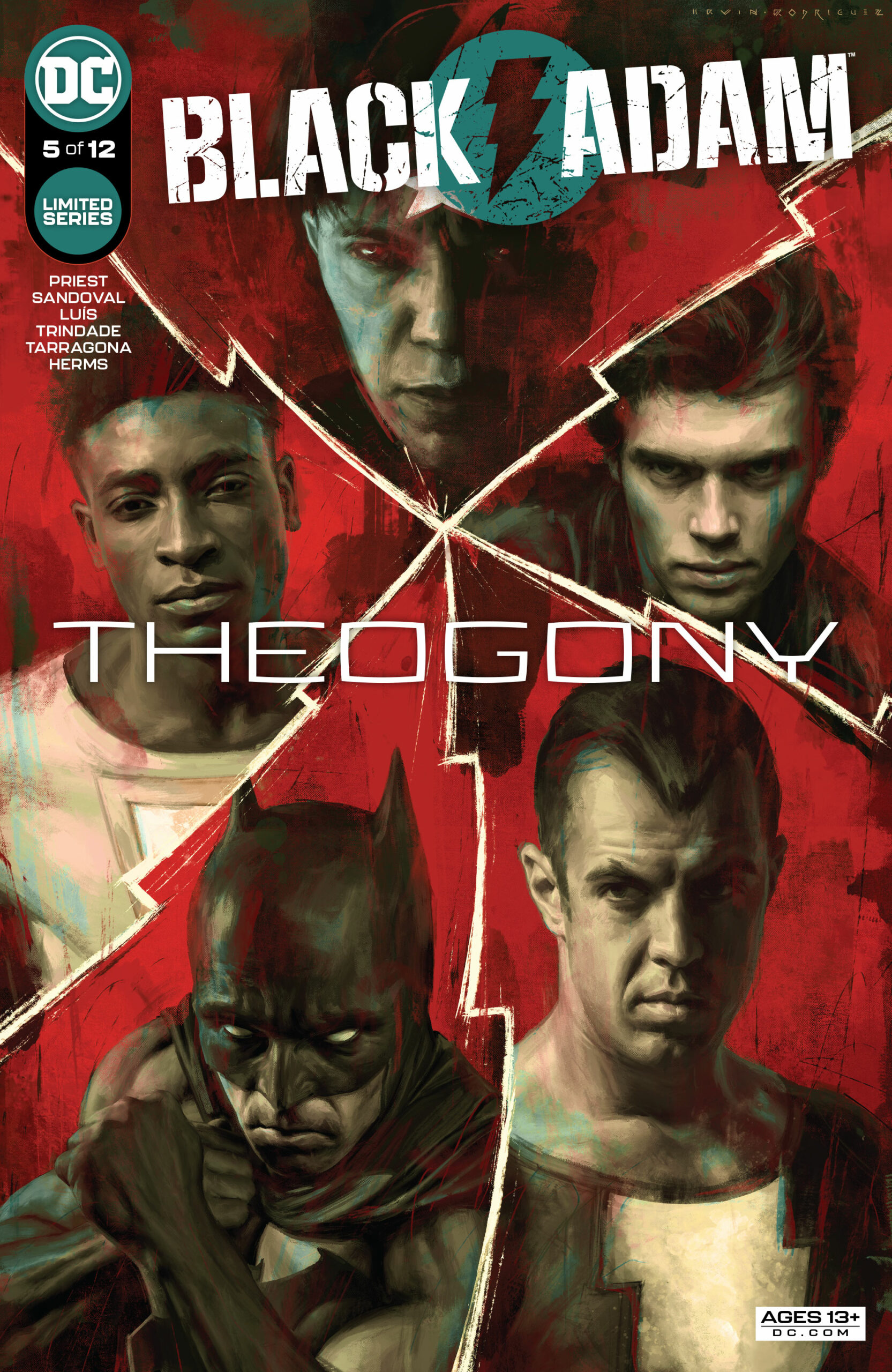 [Editor’s Note: This review may contain spoilers]
[Editor’s Note: This review may contain spoilers]
Writer: Priest
Artists: Rafa Sandoval, Jordi Tarragona, Jose Luis, Jonas Trindade
Color Artist: Matt Herms
Letterer: Willie Schubert
Reviewed by: Bryant Lucas
Summary
Black Adam #5 opens in Pittsburgh at the home of Sargon the Sorcerer, where Nergal, the Akkadian god of war, has captured the wizard. After some monologuing about how Sargon has stolen his dead king’s name and ancient ruby, Nergal places a mask on his captive, which supposedly transforms him into the long dead Akkadian king.
Meanwhile, Black Adam’s dealing with small crisis back home in Kahndaq, as a freedom fighter approaches the nation’s border in a military jet. Despite several warnings from Adam, the fighter refuses to retreat. Therefore, our titular anti-hero destroys the jet, killing the pilot.
As it turns out, Bruce Wayne has been funding the Kahndaqian Freedom movement, and Adam’s not happy about it. He confronts Bruce about his meddling in Kandaqi politics and warns him that an alien bacteria from the Dark Multiverse has modeled itself after Mesopotamian gods (hence the magic space rot he and Malik have been dealing with since the first issue). These Akkadian gods/bacterium have sent a message: they’re coming.
Elsewhere, Malik is struggling to handle medical school and life as “White Adam”. He now has the aforementioned space rot infecting his arm, preventing him from carrying out certain activities as a doctor. Black Adam approaches him while he’s in the middle of a surgery, looking for the sigil he was given. Apparently, this ring was made of Nth Metal, which is a weapon used against creatures from the Dark Multiverse. Malik, preoccupied with a surgery, tells Black Adam that the ring was at his house. After Black Adam leaves, Malik freaks out, realizing that he’s just sent Teth to the home where Malik lives with his sister and niece.
Positives
One of the cool developments in this issue is that Priest’s making a concerted effort to tie this title in with the larger happenings in the DC Universe. While this series occurs in real time against the backdrop Dark Crisis on Infinite Earths, the event has largely been ignored. Priest has managed to weave in Dark Crisis in quite an unusual and oblique way. For starters, the opening scene features a Golden Age character, Sargon the Sorcerer, who was killed by The Great Darkness in Swamp Thing #50. While there’s little to no explanation as to how Sargon is alive or what Nergal’s end game is, it’s nevertheless a cool nod to relevant DC Continuity from over 35 years ago.
Priest has also tied in events from both Metal and Death Metal, as apparently, this space bacteria-turned-gods gain their power from the Dark Multiverse. This allows Priest to introduce Hawk Girl and Hawk Man, as characters if desired since they both wield Nth Metal and have ties to Black Adam from his time in the League and on the JSA.
Finally, the writer makes a concerted effort to address Black Adam’s time on Bendis’ Justice Leage roster. It’s interesting how he handles this fact, as Batman has now articulated his grievances with the Kahndaqi ruler, despite his service to the league (NOTE: Priest makes a point of stating that this story happens before the events of Dark Crisis). This tension apparently will be a significant conflict moving forward.
Negatives
Every time I crack open a new issue of Black Adam, I have to go reread my previous review to refresh myself on last month’s plot. I’m not going to lie, the opening of this month’s issue left me scratching my head. I’d never heard of Sargon the Sorcerer, and I’ve been avidly reading DC comics for over two-and-a-half decades. Therefore, I had to fire up Google to figure out what the hell was going on in the first few pages of this issue (thank God for Wikipedia).
Anyway, I can’t say this made for an amazing reading experience; if your audience has to do homework to unearth the meaning of a comic book, then there might be a problem with the book. Once I’d figured out who was who, I went and reread the scene and it made more sense. While I appreciate the deep cuts, this type of thing has to be off-putting for newer or younger readers.
What makes the whole obliqueness of this book all the more frustrating is the fact that the week it came out was the opening weekend for the Black Adam film. Anyone who goes to see the movie, really enjoys it, and decides to go check out the comic book featuring the titular character is likely going end up scratching their head by the time they finish the issue. This series might be great for the enfranchised reader, but Priest and DC missed an opportunity to pen a Black Adam title that would be more accessible to new readers.
Verdict
There are a lot of really cool, high-concept ideas going on in Black Adam #5. Priest has decided to approach the character from an utterly bizarre angle that feels unusual for a character like Adam. The series so far has been steeped in mythology, theology, and DC comics lore/continuity. All of this speaks to Priest’s greatest strengths, and flaws, as a writer: he doesn’t write comic books but rather serialized graphic novels. Similar to the works of Grant Morrison, Priest’s Black Adam will undoubtedly read better as a trade paperback.

Images Courtesy of DC Entertainment
//pagead2.googlesyndication.com/pagead/js/adsbygoogle.js
(adsbygoogle = window.adsbygoogle || []).push({});
https://pagead2.googlesyndication.com/pagead/js/adsbygoogle.js


